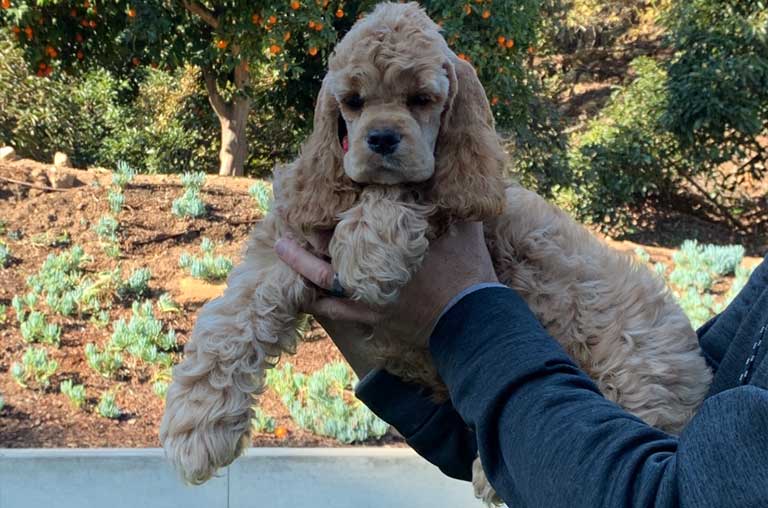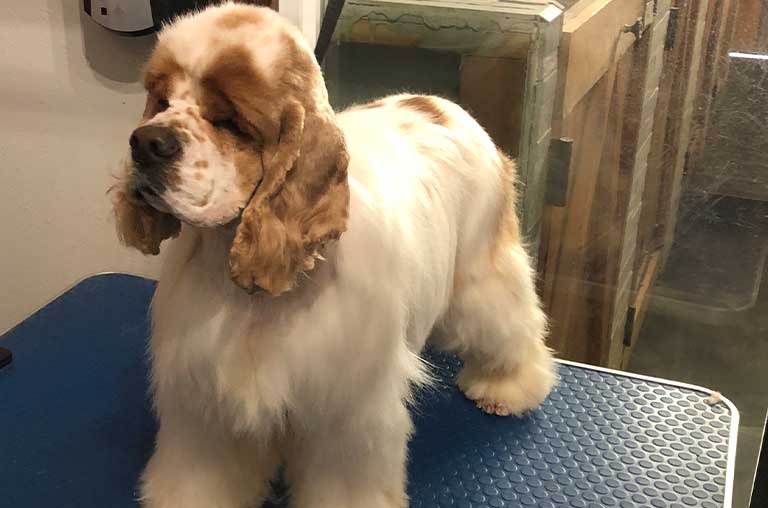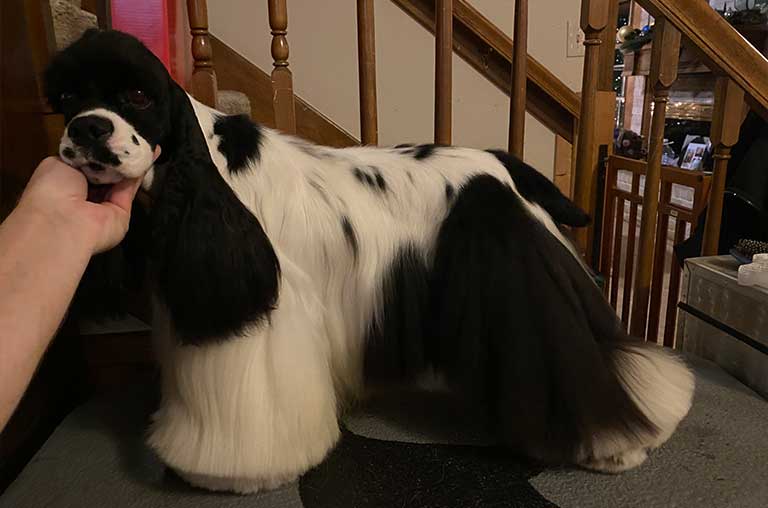Regular hair combing eliminates dead hair, spreads essential oils, and stimulates the skin’s surface but as a pet parent you must ask yourself – “how often should I brush my dog”! Maybe you are a new pet owner and do not have any idea about when to stop brushing your dog. Worry not, it’s our job to find out all the answers regarding dog hair brushing.
Dogs are creatures that can maintain their coats in a tidy and orderly manner on their own, but they required your assistance with activities that require skillful thumbs, such as hair brushing. For a healthy and clean coat, hair brushing has no alternative because it helps remove dead and chapped skin, and helps you get to know your dog’s body.
By brushing your dog regularly, you may remove any dead hairs from their coat and lessen the quantity of fur that is tracked into your home or attached to furniture like your sofa. If you don’t give your dog more frequent brushing, they’ll shed more. Dead skin and hair are removed by brushing, providing more area for fresh hair.
What is pet shedding
If you live with dogs, it’s likely that you are already familiar with the idea of shedding. When a dog sheds, it gets rid of old, unhealthy fur to make a place for new, fresh fur to develop. The amount that a dog sheds, will differ significantly based on its breed if it is pregnant, and how healthy it is in general. If you have a Cocker Spaniel, you can learn more about Cocker Spaniel shedding.
Some pets have seasonal shedding, “blowing” their winter coats away in the spring. Others, such as indoor pets and pets with short hair, may shed all year round. By taking the time to comb your pet, you can figure out if the majority of that fluff ends up on you or in the garbage.
Is it okay to brush my dog every day?
Dogs’ coats benefit from routine brushing to eliminate dirt, grasses, pollen, and other unwanted elements. Additionally, it helps avoid unpleasant mats and tangles from growing, and it is a wonderful way for the owner and pet to bond. Now, you must be thinking – “how often should I brush my dog on daily basis? “

Dogs require different amounts of brushing depending on their coat type and length. In order to eliminate loose hair, smooth, short-coated dogs may often be brushed once every several weeks.
You should brush your dog after it swims, both before and after the wash, and when they are shedding. Dogs with long locks should be combed every week, as should breeds with shorter, wiry hair. Short-haired dogs may get their fur brushed every few weeks without worrying about it matting or tangling. Although most dogs like being brushed, if yours is reluctant, pick a peaceful moment to give them a brush. Beyond proper grooming, nutrition plays a huge role in your pet’s beautiful coat. Meal enhancers that have been specially developed to make your dog’s coat sparkle like a diamond.
Choosing the right brush for your dog
The texture and length of your dog’s coat should be your main considerations when selecting a brush. It’s crucial to choose the right kind of brush for your dog. The different coats will require various brush types. Let’s start by taking a look at the various coat kinds.
1. Long-haired dog
The brush is one of the best Cocker Spaniel grooming tools. Long-haired breeds benefit most from pin brushes since they grab the undercoat and eliminate loose hairs gently without harming your dog. Always begin brushing close to the skin and go away from it. To remove any matting, use a comb.
You must use the appropriate comb for your puppy’s hair type, just as various human hairstyles call for various grooming products!
2. Short-haired dog
Silicone combs and grooming gloves are ideal to brush a short-haired dog. Your dog will think you are just patting them rather than actually pampering them, and they aid in bringing dirt and loose hair to the surface. You may also use a standard brush; a firm organic brush or a soft slicker brush works best for short coats. Use a soft-bristle brush to complete the procedure so that the natural oils in your dog may be distributed.
3. Wiry dogs

Wire-haired dogs need to be brushed with a slick brush first, then brushed with a metal comb. These puppies just need to be brushed once every few days, and the dead undercoat hair may be removed with a stripping knife.
How to brush with the FURminator?
The FURminator is simple to operate if you know how to use it properly and have an ergonomic handle on it. Here are some pointers for getting going:
- Make sure the coat on your dog is entirely dry.
- Remove any mats, knots, and foreign items with care.
- Examine the dog’s body entirely for any wounds, such as cuts or bruises, so you can avoid touching those places.
- Brush your pet from its head to its tail. Make sure the teeth of the Furminator are angled in the same direction as its coat.
- Move the brush up and away from your dog’s skin using long, gentle strokes. As necessary, remove hair from the teeth.
- Brush evenly all over your dog’s body. Be very cautious near delicate parts like the genitalia, stomach, legs, and ears.
But “how often should I brush my dog with a Furminator for an effective result?” The answer is to use it once or twice a week for about 10 to 20 minutes.
Brushing a Cocker Spaniel
When brushing a Cocker Spaniel, there are proper and improper ways to do it. I usually brush my cocker spaniel every alternative day. While brushing your Cocker Spaniel’s hair remember to –
- Frequently brush your Cocker Spaniel. A minimum of every three days is acceptable, but daily brushing maintains the coat silky, the oils stimulated, and the tangles at bay.
- Avoid combing through knots or matting. Utilize the items listed above.
- Use caution not to harm your Cocker’s surface as you gently scrub her coat using a slicker brush. So that you don’t pull her skin, work in the direction that the hair is growing.
- Use the de-shedding tool next all over your Cocker’s body if she is even slightly shedding.
Benefits of brushing your dog

Before you are looking for answers to – “how often should I brush my dog” you must know how it can benefit your pups.
Brushing your dog’s coat promotes even distribution of its natural oils
Dogs require a little assistance to disperse the natural oils in their coats because they don’t groom themselves as meticulously as cats do. They will appear gorgeous and polished, and any greasy buildup will be avoided.
It may be a time for bonding.
If your dog tolerates or even likes being brushed then the moments you spend together could be a wonderful opportunity for bonding. The practice could be calming for your dog as well as a method for you to unwind after a tough day.
It assists in avoiding uncomfortable matting.
If you’ve ever had your hair pulled, you know how hurting it can be. You may now visualize that similar painful sensation spreading throughout your entire body to get a sense of how uncomfortable a matted dog must feel. Mats hurt, they may disguise, and they can even lead to skin issues including infections and scars.
Spot any lumps or parasites easily.
Brushings can help you become familiar with the appearance of your dog’s skin so that you can spot any changes. Some bumps are innocuous, but if you see one that isn’t, it’s important to catch it right away since it might save your life. Brushing also helps you to deal with external dog parasites in cocker spaniels.
It decreases shedding.
The more fur you can extract from your dog using a brush, the less hair will be left on the floor, furniture, and clothing in your home.
Brushing makes your dog appear nicer.
A dog that has been properly combed appears better, livelier, and more nutritious than one that has not.
Conclusion:
Next time you are thinking of – “how often should I brush my dog” remember the key is not to forget to groom your dog. Brushing your dog may improve their general well-being and deepen your relationship with them, as it can with many other pet care duties. Your dog will become accustomed to the task with some time and experience, and you’ll gain confidence in your abilities to preserve the condition of its skin and hair.
FAQ About Cocker Spaniel Brushing Schedule
Find here some frequently asked questions and answers about dog brushing schedules:
1. How Many Times a Week Should You Brush a Cocker Spaniel?
A Cocker Spaniel has to get at least two weekly brushings. This ought to be plenty to prevent him from matting and tangling while also taking care of any extra hair that he will inevitably lose. Brushing a Cocker Spaniel after every 3 days is required to keep a tidy appearance.
2. Do Cocker Spaniel Feel Better After Brushing?
The majority of Cocker Spaniels enjoy being groomed. Many dogs dislike being brushed, especially if they weren’t exposed to it when they were puppies. Dogs are more likely to enjoy combing without complaint and even like it when it becomes a regular part of their routine. And trust me, a Spaniel that dislikes being groomed is difficult to contain!
3. How Long Should I Brush My Cocker Spaniel?
You should brush your dog for 15-30 minutes if his coat is clear of mats and dreadlocks. This might take up to 1 hour for an elder dog with dreadlocks. It’s crucial to avoid being tough with your dog because it wasn’t his fault that his hair became tangled.
4. How Often Should You Bathe a Cocker Spaniel?
Puppies of cocker spaniels shouldn’t be bathed until they are at least 4 weeks old, and the longer you can wait, the better. Showering frequently may result in dry skin, once per week is usually fine. If Coconis not dirty, you might just want to use the towel and take a bath every three to four weeks. I wouldn’t advise taking baths more frequently than once a week.
5. How Do I Know When to Stop Brushing My Cocker Spaniel?
When you can no longer pinch out a tuft of hair, stop brushing. Your beloved dog requires tender attention so, never pull at knots or tangles, or force any brush firmly against your pet’s delicate skin. Be mindful of and avoid touching any warts, or moles.

Leave A Comment